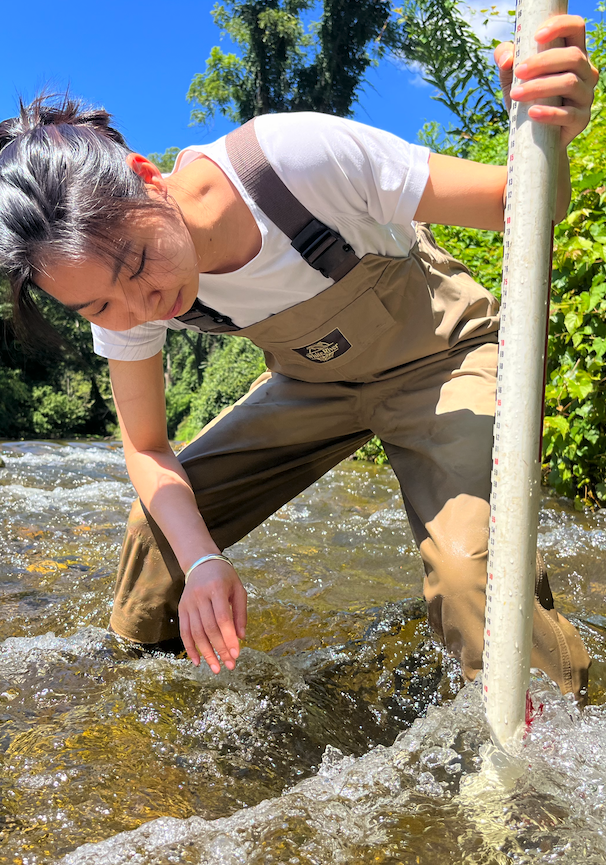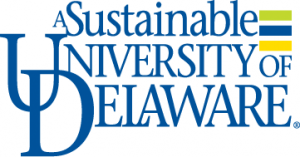Delaware Environmental Institute

New DENIN Fellow Christy Li Is Modeling Mercury Contamination in South River, Virginia
Christy Li grew up in the Washington, D.C., area, where the outsized influence of the Potomac River and the Chesapeake Bay sparked an early interest in the environment.
Now as a doctoral student at UD and a newly announced Fellow of the Delaware Environmental Institute for 2022–2024, Li is studying mercury contamination of the South River in Virginia and hoping to help convey the dangers of mercury-tainted fish to the local population.
We hear a lot about nutrient pollution in Chesapeake Bay and the algal blooms that can result, but not many people know about toxic contaminants in Chesapeake Bay. You can’t see toxic contaminants, but they affect aquatic life. People, especially those in immigrant communities, said Li, don’t realize that eating fish contaminated with mercury can have negative effects on human health.
The South River in central Virginia flows into the Shenandoah River then the Potomac River, which flows into Chesapeake Bay. The South River was polluted with mercury between 1929 and 1950 from a textile factory in Waynesboro, Virginia. The pollution was discovered in 1976. The mercury is now attached to fine sediment amidst the gravel on the river bottom.
Li is studying the transport and removal of mercury-absorbed fine sediment in the river through the development of a sediment transport model. She is attempting to determine how long it would take the river to clean out these contaminated sediments without human interference.
Li is part of the South River Science Team, established in 2001 as a collaboration between the state of Virginia and DuPont, the owner of the textile factory that was the source of the mercury pollution. In her proposal for the DENIN fellowship, Li wrote: “The goals of the South River Science Team are to understand why mercury in South River fish has not decreased over time and to identify potential solutions to improve the situation.” Her doctoral advisor is James Pizzuto, professor of geological sciences and a leader of the South River Science Team.
After wrapping up her field monitoring work this fall, Li will continue to refine the computer model to predict sediment removal from the river bottom. The model may also be helpful in the study of other contaminants such as sediment, heavy metals, and industrial chemical compounds, and in other rivers with similar issues.
When she finishes her Ph.D., Li intends to continue in the water management and restoration field, possibly with a government agency.
She had an unlikely entry into science. She attended an arts high school, and an influential art teacher pointed out the continuing thread of the environment throughout her artwork and encouraged her to continue telling this important story. This led to Li’s decision to study earth and environmental science as an undergraduate at Lehigh University in eastern Pennsylvania. She completed undergraduate research in geomorphology, which gave her the confidence to pursue a Ph.D. in this field. She graduated in 2018 with dual degrees in earth and environmental science and math.
During undergrad, Li served as a sustainable development intern in Costa Rica for two months. She helped with various projects, including forestry conservation, assessing the impact of infrastructure on bird mortality, and installing a biodigester to manage waste and produce fuels for the residents of San Luis de Monteverde. The work she did there also inspired her to work on environmental issues in the U.S.
Li is eager for the opportunity that the DENIN Fellowship may provide to communicate about the health risks of toxic metals in rivers to people in the Waynesboro area and others who live in watersheds with contaminated rivers, especially nonnative-English speakers.
In her free time, Li still paints and draws to clear her head, and loves to hike.
By: EcoWrite, LLC
Photo credit: Max Huffman


